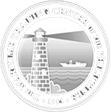RADAR NAVIGATION, RADAR PLOTTING and USE OF ARPA (ROPA)
| AIMS |
This course provides training in the basic theory and use of radar for officers in charge of a navigational watch. It is based on the guidance on training in radar observation and plotting and in the operational use of ARPA in Section B-I/12 of the International Convention on standards of Training, Certification and Watchkeeping for Seafarers, 1978, as amended in 1995 (STCW 1995). This model course aims to meet the minimum training standards in Table A-II/1 of the STCW 1995. this guidance supersedes the recommendations annexed to resolutions A.482(XII) and A.483(XII) adopted by IMO in 1981. This model course aims to meet the mandatory minimum requirements for knowledge, understanding and proficiency in Table A-II/1 of STCW 1995. the aspects covered include the theory necessary to understand how radar information is obtained and displayed, the limitations and accuracy of that information, the information and recognition of unwanted responses, the correct use of operational controls to obtain an optimal display and checks on performance of the set. The various modes of display available and the choice of a suitable mode for a particular application are covered, together with the effect that changes in the course or speed of “own” or target ship have on the appearance of the display. The course also covers the recognition of critical targets, the measurement of bearing and distances, and the use of these for fixing the ship’s position and maintaining a plot of the movement of other ships as a aid to collision avoidance. Exercises in the application of the International Regulation for Preventing Collisions at Sea (COLREG) make use of the resulting plots. |
||||||||||||
| OBJECTIVES |
A trainee successfully completing this course and meeting the required performance standards will recognize when radar should be in use; will select a suitable mode and range setting for the circumstances; will be able to set the controls for optimal performance; and will be aware of the limitations of the equipment in detecting targets and in terms of accuracy. When within range of the coast, the trainee will be able to compare the radar display with the chart, select suitable conspicuous land targets and use these targets to fix his position. The trainee will also be aware of the need to maintain a continuing plot of ship targets which may pose a potential threat of collision; and he will be able to derive from the plot the necessary information about other ship’s courses, speeds and nearest approaches to enable action to be taken in ample time, in accordance with COLREG to prevent a close-quarters situation arising. |
||||||||||||
| ENTRY STANDARDS | This course is principally intended for candidates for certification as officers in charge of a navigational watch. Before entering the course, trainees should have completed a minimum period of six months at sea and preferably have gained some experience of bridge watchkeeping. | ||||||||||||
| SCHEDULE |
|
||||||||||||




